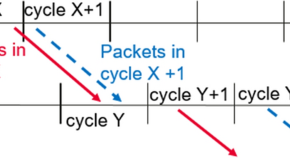
Collection
Special Issue on High-Precision, Predictable and Low-Latency Networking
- Submission status
- Closed
New waves of networked applications continue to push the limits of what is possible with networks today. For example, Industrial Internet applications, Augmented Reality, Tactile Internet require ultra-low latency measured in single-digit milliseconds and do not tolerate jitter at all. Economic pressures mandate increasingly cloudification of real-time applications with precision service level needs. Many of those applications are mission-critical and cannot afford any loss in connectivity or even single packets. Collectively, these applications require networking services that support high-precision and predictable service levels with associated guarantees that border on determinism. This requires a rethinking of many of the principles underlying existing "Best Effort" internetworking technology.
Various approaches are emerging that try to tackle those challenges. Data centers with fixed topologies and a constant number of hops rapidly replace conventional routing and more general Internet topologies. Networks are becoming more programmable to allow to custom-tailor and optimize treatment of packets and flows. Related technologies range from Service Function Chaining to Network Slicing to SDN. While 5G is making URLLC at the network edge a reality, momentum for Beyond 5G (B5G) and 6G is building to push the boundaries of precision services beyond the edge and across the core. One overarching question concerns how these technologies can be harnessed and what additional approaches are needed to be able to actually deliver on high-precision networking with service levels that are predictable and that can be guaranteed. This will involve advances across all networking planes, including but not limited to approaches for the programming and processing of packets in the data plane, evolved control interfaces and ultra-low latency control loops to optimize service levels in the control-plane, methods for high-precision measurements and telemetry with nanosecond accuracy at scale, as well as advances in the related platforms and algorithms in the management plane.
This special issue focuses on challenges and solution approaches to deliver, manage, control, monitor, and measure high-precision network services that provide applications with predictable service levels that can be guaranteed. This includes (Ultra) Low-Latency networks, deterministic networks, 6G, etc. The special issue specifically encourages submission of papers that describe disruptive concepts, innovative solutions, testbeds, experiments, in addition to more evolutionary approaches. Topics of Interest include but are not limited to the following:
--Platforms and solutions to manage and operate high-precision networks and services, e.g., Industrial Networks, Tactile Networks, Augmented Reality (AR), and cloud gaming
--Proof and validation of high-precision service level guarantees
--High-precision measurement techniques for ultra-low latency and jitter
--Service level assurance for micro services and service function chains
--Applications for and advances in Inband Network Telemetry and iOAM
--In-network service level tuning and optimization; predictable QoS
--Novel network programming models
--Applications of Artificial Intelligence for high-precision networking
--Time-Sensitive Networking (TSN), Deterministic Networking (DetNet), Network Protocol Evolution for IT/OT convergence
--SDN applications for high-precision, high-performance networking
--High-precision cloud networking services using Fog and Edge Computing
--Deployment and operational experiences with Industrial Internet, Tactile Internet, networked AR, cloud gaming5G/B5G approaches
--Testbeds and platforms for High-Precision (OAI, MAGMA, OpenNetVM, etc.)
--Network optimization and hardware considerations for fast processing and delivery (DPDK, etc.)
Submission ScheduleWe use an “open” submission schedule, which means that you can submit your paper at any time before we close the call (see below) and that we will start the review process right after receiving the submission. Many of the dates indicated below are therefore stated relative to the date the submission was initially received.
Call closes: May 31, 2022
Revision notification: 2 months after submission
Revised paper due: 1.5 months after the revision notification
Final notification: 1.5 months after the revised paper notification
Expected publication of the special issue: third quarter of 2022 (early accepted papers will be accessible online before the deadline)
Submission FormatSubmitted manuscripts must be written in English and must not exceed 30 pages in Springer LNCS format. Your paper must describe original research not published or currently under review by other journals or conferences. Parallel submissions will not be accepted.
All submitted papers, if relevant to the theme and objectives of the special issue, will go through an external peer-review process. Submissions should (i) conform strictly to the Instructions for Authors available on the JNSM website and (ii) be submitted through the Editorial Management system available at https://www.editorialmanager.com/jons (before March 22nd) or the Springer Nature Article Processing Platform available at https://editorial.springernature.com/ (from March 22nd to May 31st).
Peer Review ProcessAll the papers will go through peer review, and will be reviewed by at least three reviewers. A thorough check will be completed, and the guest editors will check any significant similarity between the manuscript under consideration and any published paper or submitted manuscripts of which they are aware. In such case, the article will be directly rejected without proceeding further. Guest editors will make all reasonable effort to receive the reviewer’s comments and recommendation on time.
The submitted papers must provide original research that has not been published nor currently under review by other venues. Previously published conference papers should be clearly identified by the authors at the submission stage and an explanation should be provided about how such papers have been extended to be considered for this special issue (with at least 30% difference from the original works).
Guest Editor Details:Raouf Boutaba University of Waterloo, Canada rboutaba@uwaterloo.ca
Alexander Clemm Futurewei, USA alex@futurewei.com
Guillaume Doyen IMT Atlantique, France guillaume.doyen@imt-atlantique.fr
Bertrand Mathieu Orange Innovation, France bertrand2.mathieu@orange.com
Mohamed Faten Zhani ETS Montreal, Canada mohamed-faten.zhani@etsmtl.ca
Articles (7 in this collection)
-

-
Network Coding Based Fault-Tolerant Dynamic Scheduling and Routing for In-Vehicle Networks
Authors (first, second and last of 4)
- Ammad Ali Syed
- Serkan Ayaz
- Madhu Chandra
- Content type: OriginalPaper
- Published: 14 January 2023
- Article: 27

-
How Low Can You Go? A Limbo Dance for Low-Latency Network Functions
Authors (first, second and last of 4)
- Sebastian Gallenmüller
- Florian Wiedner
- Georg Carle
- Content type: OriginalPaper
- Open Access
- Published: 28 December 2022
- Article: 20
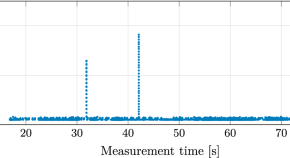
-
A Comprehensive Characterization of Threats Targeting Low-Latency Services: The Case of L4S
Authors (first, second and last of 4)
- Marius Letourneau
- Guillaume Doyen
- Bertrand Mathieu
- Content type: OriginalPaper
- Published: 26 December 2022
- Article: 19
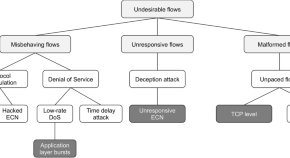
-
Asynchronous Time-Aware Shaper for Time-Sensitive Networking
Authors
- Miklós Máté
- Csaba Simon
- Markosz Maliosz
- Content type: OriginalPaper
- Open Access
- Published: 12 September 2022
- Article: 76
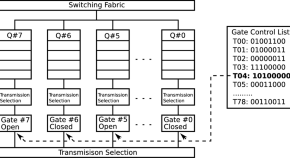
-
EnGINE: Flexible Research Infrastructure for Reliable and Scalable Time Sensitive Networks
Authors (first, second and last of 11)
- Filip Rezabek
- Marcin Bosk
- Jörg Ott
- Content type: OriginalPaper
- Open Access
- Published: 08 September 2022
- Article: 74
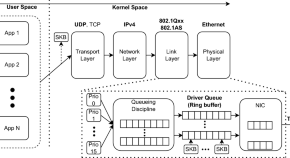
-
High Capacity and Resilient Large-Scale Deterministic IP Networks
Authors (first, second and last of 7)
- Vincent Angilella
- Filip Krasniqi
- Liu Xuan
- Content type: OriginalPaper
- Published: 23 August 2022
- Article: 71
